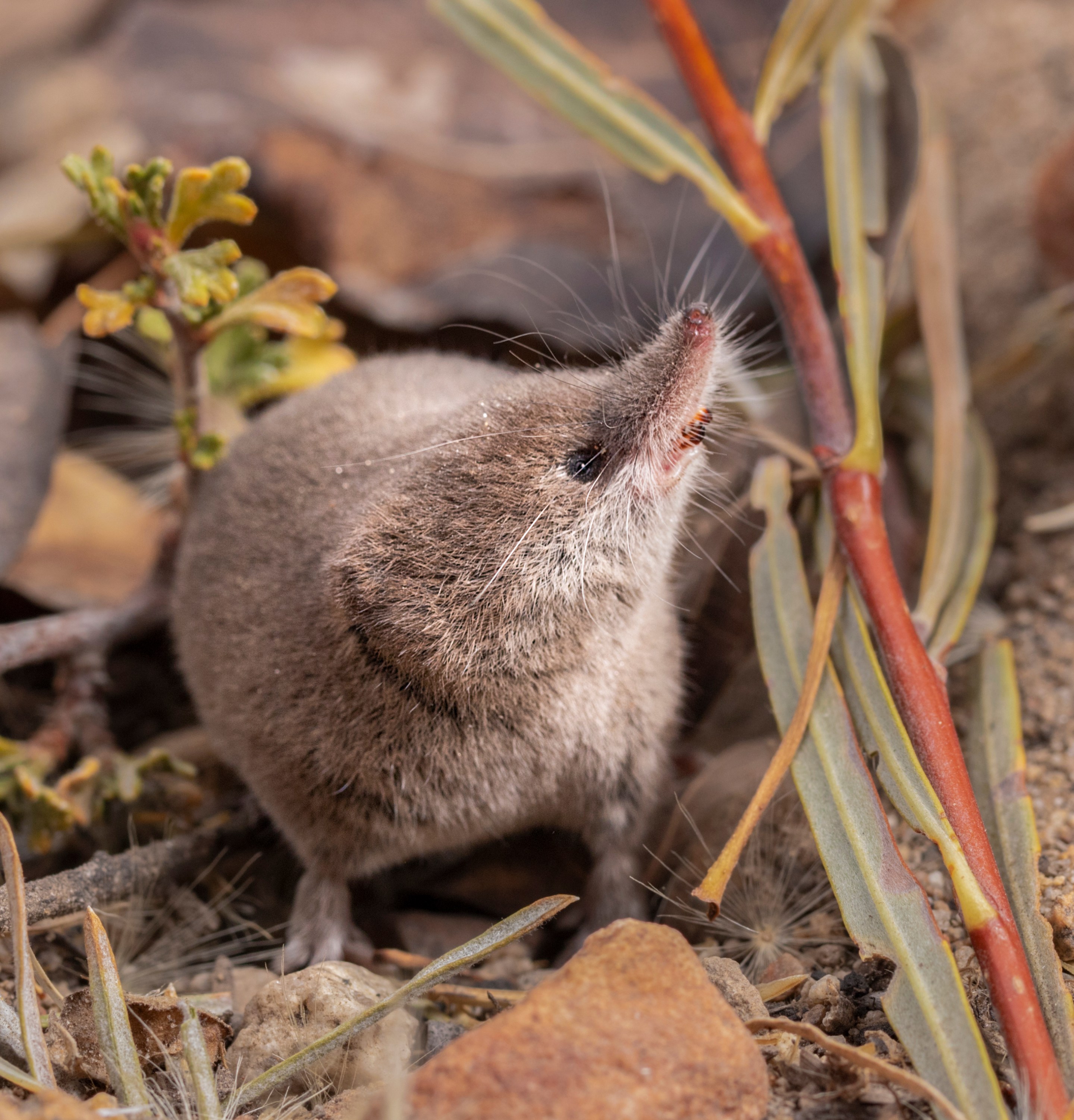Vishal Subramanyan and Prakrit Jain had never even heard of the rare shrew they would soon spend months chasing. The students were both in the same mammalogy class at the University of California, Berkeley, which included trips teaching students how to catch, handle, and process small mammals. On one such trip, Jain brought his camera and snapped some shots of voles and deer mice. Curious if there were any other small and obscure mammals nearby to photograph, Jain perused a list of the mammals of California and noticed that one species, the Mount Lyell shrew, had never been photographed before. "I was immediately fascinated," Jain said.
Jain told Subramanyan about the shrew in September, and the two hatched a scheme. Subramanyan, who has since graduated from Berkeley, is a wildlife conservation photographer and a creator in the California Academy of Science's California Creators for Nature program. Neither Jain nor Subramanyan had worked with a species like a shrew before; Subramanyan ordinarily photographs wildlife giants such as mountain lions and wolves, and Jain ordinarily photographs itty-bitty invertebrates, such as scorpions and arachnids. The small shrew offered them a chance to meet in the middle.
At a glance, nothing about the Mount Lyell shrew suggests the species would be one of the rarest Californian mammals. It looks like a typical shrew: small, brownish, and furry, with two beady black eyes and a distinguished sort of snout. The shrew was first collected by scientists in 1901 from the crest of the Sierra Nevada mountains and described in 1902 by the zoologist Clinton Hart Merriam. Even then the Mount Lyell shrew appeared to be rare, representing just five of the hundreds of shrews the researchers trapped in the area.
In the years since, only a handful of researchers have trapped Mount Lyell shrews again. Fortunately for Subramanyan and Jain, two of those researchers worked at Berkeley. One, James Patton, a professor emeritus at Berkeley, previously taught the same mammalogy class for around 30 years. "I'm not at all sure how they became enthralled by this shrew," Patton told me in an email.
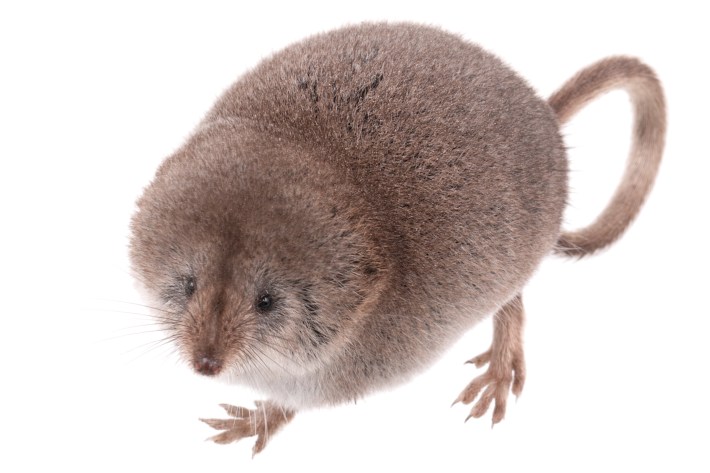
In October, Jain and Subramanyan emailed Patton to ask for advice. "The professors we had reached out to got, from their perspective, a truly ridiculous email," Jain said. "We send them an email saying, so, arguably the rarest land mammal in California, we want to go and find it. Do you have any tips?"
Patton was glad to share tips, but also warned the duo that the task would be hard. "This was a rare shrew, known only from very few localities, and with only a few specimens in museum collections," Patton said. He spent six summers in the early aughts hiking and trapping the birds and mammals of Yosemite National Park, reprising a 1915 survey. Patton and colleagues found Mount Lyell shrews at several spots in the park, as well as in the Mono Lake Basin to the east. Patton suggested to the pair some sampling spots he suspected might have shrews.
No one was sure if the students would be able to pull off the shrew stunt. "My general thought when they approached me was that they would have probably only a 50-50 chance to get a shrew," Patton said. Subramanyan said that while the professors were thrilled that undergraduate students had become interested in this shrew, "they were also a little like, 'there's no way these two kids can actually go catch the shrew,'" Subramanyan said.
But he and Jain were undeterred. "We're dedicated to the point where we're described as crazy by our friends and family," Subramanyan said. "They're like, 'Vishal, you photograph bobcats and mountain lions. Why are you doing this for a shrew?'" Jain's people, however, had fewer questions. "My family and friends were very happy that I would be bringing home pictures of a cute small mammal instead of, like, a weird bug," Jain said.
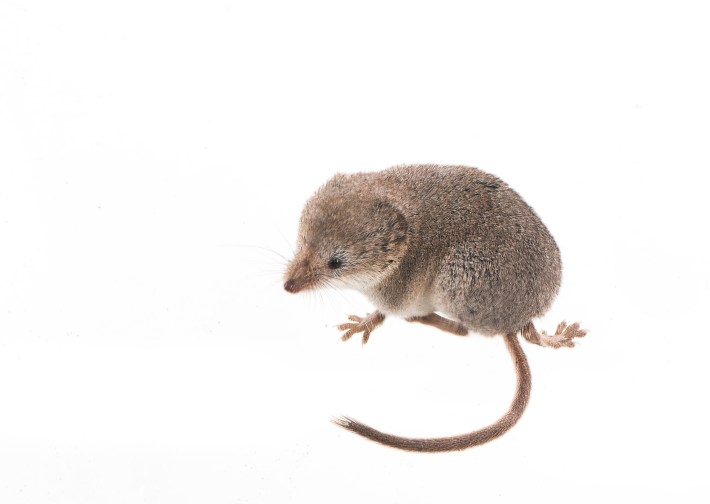
Locating a shrew, however, would only be half of the problem. The tiny animals have extraordinarily fast metabolisms. "They can't survive for more than a few hours without eating," Subramanyan said, adding that the handful of times researchers did manage to obtain a Mount Lyell shrew, they found the animal already dead. Shrews are always searching for their next meal, especially in the wintertime as food becomes scarce. So Jain and Subramanyan would need to be savvy to photograph the shrew alive.
A few other researchers pitched in to the shrew cause, helping the students get equipment and a permit from the California Fish and Wildlife department. They had just three weeks before the first snow would hit, making the shrew's habitat inaccessible. They set out in the first few days of November with a friend, Harper Forbes. Once at the site, the trio set out more than 100 pitfall traps—plastic cups placed in holes dug in the ground—each around 10 paces apart. "I suggested they put mealworms or cat food in the cup," Patton said. As the shrews sniffed around in search of food, they unwittingly fell into the cups, whose smooth sides prevented escape.
Although Jain and Subramanyan found the vigorous odor of the cat food attracted shrews from far away, the rodents would never actually eat it. But they did eat mealworms, which would keep them alive as the students checked the traps, which they did about every two hours. "Over the course of the three nights and four days we spent there, we never really slept for more than two hours at a time," Subramanyan said. "In total I would say we got eight, 10 hours of sleep."
Once the students located a shrew, they prepared the creature for a photoshoot: first against a white background and then in a bucket of leaves. Shrews, unable to comprehend the concept of a photoshoot, do not cooperate in such situations. "The main issue really was the fact that they are running around," Jain said. On one of the students' earlier mammalogy trips, they had tried and failed to photograph a shrew, which ran away before they could get a picture. But by this time around, they had refined their techniques. One person would hold a cup over a shrew and give it a bit of food to calm it down, then whisk off the cup so another person could take a quick picture. "For every photo that we got in focus, we must have 10 or 20 photos where the shrew is running out of the frame," Jain added.
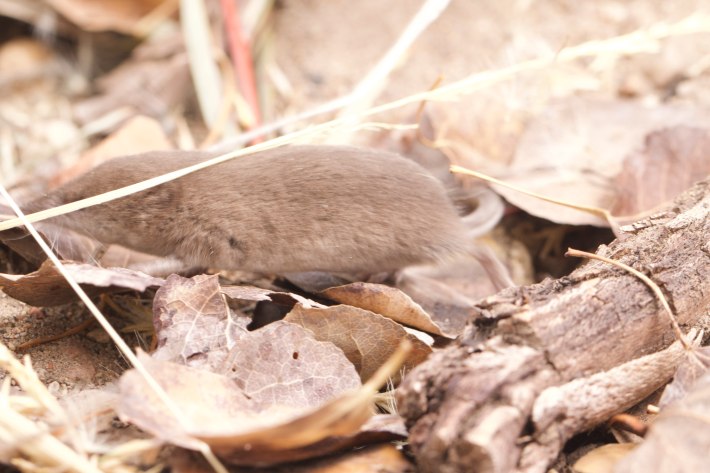
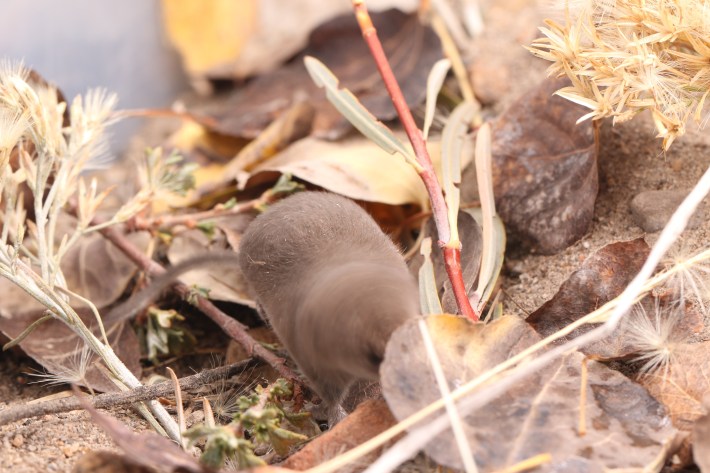
One of the shrew's most hectic traits, however, ended up helping the students. Shrews do not follow a traditional sleep schedule, dividing the day between sleeping and waking. Instead, the mammals take extremely brief micro naps and spend all other their waking hours running around looking for food. "When they had just eaten a little bit of food and they were feeling more satiated, they would sometimes time a nap for a few seconds," Jain said. "And that would give us a good opportunity, right when they woke up from the nap, to take a good photo."
The trio ended up processing around 15 to 18 shrews over the course of the trip. But they could not be absolutely certain if the shrews they had captured were actually Mount Lyell shrews, or any of the handful of other doppelganger shrew species that roamed the mountains. After each shrew's photoshoot wrapped up, the students took a genetic sample and ensured the animal was in good condition for release. "For the shrews, their ears are really small, so it's hard to get a good ear clipping," Jain said. "So we would take the very last bit of their tail, which isn't really damaging to the shrew."
Back in the lab, the students confirmed they had actually trapped four different types of shrews: the vagrant shrew, the montane shrew, the Merriam's shrew, and their ultimate target, the Mount Lyell shrew. They showed their results, and some video footage, to the professors who had given them advice before the trip. "As a teacher I was always impressed by kids that had the interest and drive to ask questions and put out the effort to get the answer," he said. "These kids did just that."
In 2016, a report from researchers at the University of California, Davis, ranked the Mount Lyell shrew as either "extremely vulnerable" or "highly vulnerable" to various climate-change scenarios. As the world has warmed, the shrews' populations have contracted or moved farther north into colder temperatures, Jain said. "The species may lose 50 to 80 percent of its range within about 60 years, to the extent that extinction is a very real concern," Jain said.
Both Subramanyan and Jain hope their photos of the Mount Lyell shrew shed light on the less charismatic species often left out of the conservation spotlight. "You've got a lot of small mammals and other species, invertebrates and things like that, that kind of just quietly disappear under the radar," Subramanyan said. Sharing photos and stories about the Mount Lyell shrew will at least let people know that the species' world may already be disappearing, he added.
I asked Jain and Subramanyan how they celebrated after the trip. Subramanyan laughed, then added, "We slept and we triumphantly showed photos to everybody in our class, especially those who doubted us."
